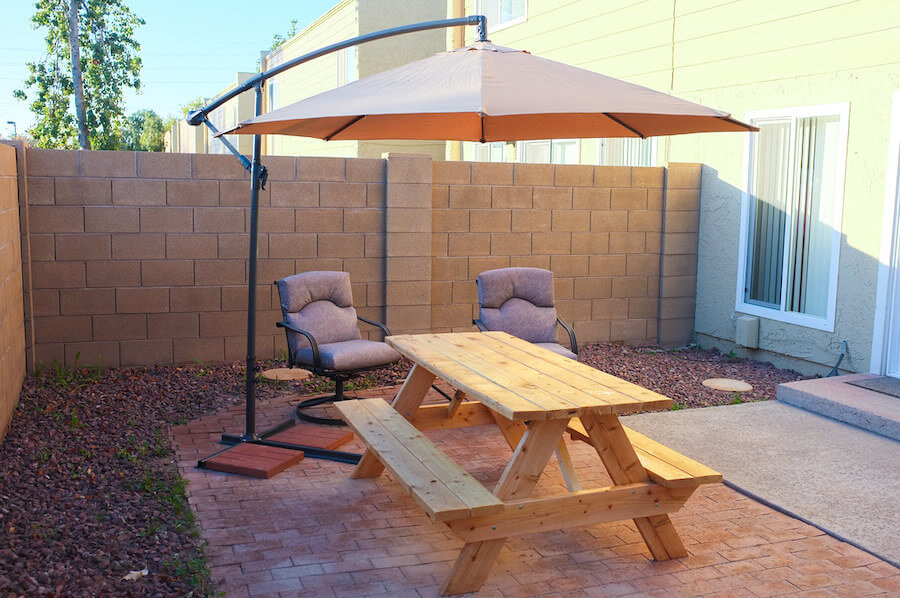You already have a patio in your yard, but what can you do to change its look or strengthen the structure? Can you pave over an existing patio?
This project doesn’t sound easy. Today, we will share with you everything you need to know before paving the landscape. Let’s stay with us to discover!
Table of Contents
Can You Pave Over An Existing Patio?
Yes, you can. Although you don’t have to remove or demolish the existing slab, there are multiple things to consider for the job.
Almost any type of paver can cover an existing patio as long as the materials fit together and provide a tight surface. Your choices are brick, flagstone, and natural paver stones.
Bricks don’t work on an asphalt surface, though, if you want to use mortar. Keep in mind that the patio should have a stone barrier in addition to the fence.
The ideal border stones are flat pavers since they present fewer tripping risks. Trimming border pavers to match the patio’s edge can also be essential.
You must first ensure the foundation is strong enough to handle a heavy, bully layer onto it. To achieve the best result, take into the following three things:
Existing concrete
The patio you have may match or not match your home’s structure.
Regardless of the case, you have to build the new paver to create a smooth transition from an indoor to an outdoor area.
The height of the existing surface should allow a proper distance between the new paver and the door sill. In no way should they obstruct any moist course membranes.
Remember to consider the increased height your newly paved area will have above the ground.
It will cost more but look more creative if you can disguise the surrounding boundaries and borders to conceal the extra height.
If, however, your current slab has cracks, is unlevel, and is in horrible condition, you should demolish it and rebuild it from scratch. It is less expensive than digging up the surface and putting in pavers.
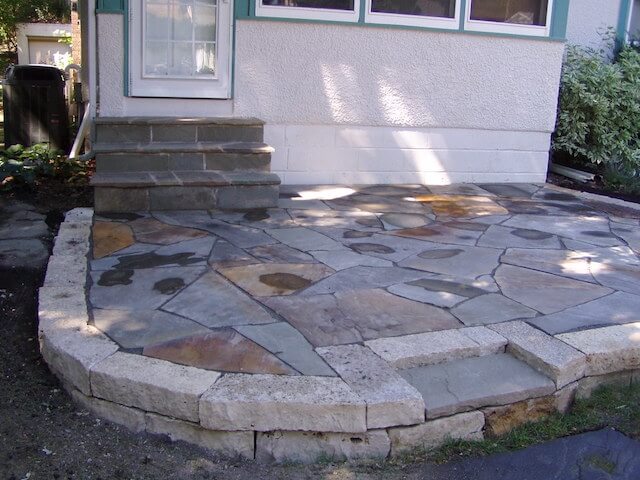
Drainage
Ensure that your foundation slopes properly and doesn’t collect water.
Because slabs can’t let water drain through the materials and into the ground, paving over them might cause drainage issues.
You need to construct the pavers in accordance with the slope of the foundation, ensuring the water-draining edge remains very low and pliable.
To avoid puddling, you can also drill tiny holes through the patio every several inches.
The material for the paver is essential. If your surface demands appropriate drainage, use permeable pavers.
They should also satisfy your requirements in functionality and aesthetics.
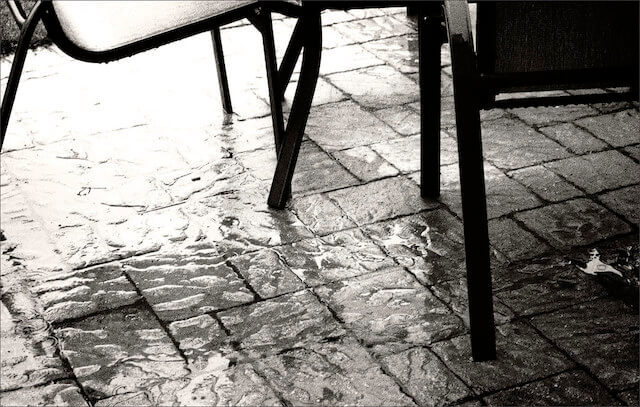
Misconceptions
Unlike what most people think, laying pavers over an existing patio makes a lot of sense. The patio can serve as a sturdy basis if the surface is heavy and solid.
This project is common if you have a concrete patio and want to install tiles over it. They would support each other well, given that they are both mineral-based materials.
You don’t have to cut or break the old concrete and pay to send it to the rubbish dump. Moreover, there won’t be any worries about damage to the underground services.
The wide variety of paver products accessible makes it simple to DIY, incredibly durable, and possible to develop many new designs and styles.
How To Pave Over An Existing Patio?
People think paving over an old patio would be extremely difficult if there is an existing plain surface. In actuality, you may do the project much more quickly.
Before settling on a certain material and layout, consider the purpose of the area you’ll be renovating and the weight it must withstand.
For example, if you are covering a concrete pavement, you must select pavers for car usage, such as bricks, to ensure long-lasting resilience.
Use slip-and salt-resistant pavers if the project is for pool surrounds. They are appropriate for your pool location. You may also need matching curbing or stair treads.
Have you pictured how your project will look? Now, choose one of the three methods below to pave your patio. Each serves a particular purpose, so you should consider your case and choose the most suitable solution.
Sand set
If your patio has walkways to pathways, this method should be your first consideration. It’s also suitable for vehicular applications requiring edge or curb restraint.
If you choose this sand set approach, please take these steps:
- Lay down 20 to 30 mm of bedding sand that you have cleaned carefully on the old patio. The bedding sand will permit paver contraction, expansion, drainage, and settling.
- Complete the paver installation in accordance with the best practices for the product suggested by the manufacturer.
- To prevent the pavers from shifting or moving once they are in use, firmly attach the edge restrictions.
- Once the brick pavers are in place, you must use jointing sand to fill in the spaces between them.
- Compact the paved area. You need three passes to secure the pavers properly. And your newly paved patio can work now.
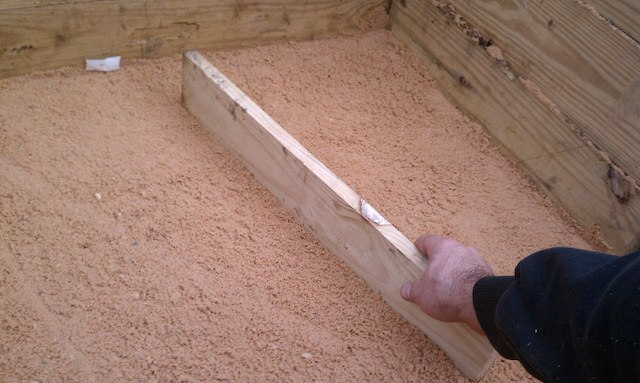
Glue set
Choose this approach if you need more strength and are working with pool surrounds. It calls for high-quality glue for the best performance.
Using this method, you will apply the glue to secure the pavers to the old patio. It’s easy to do if the falls and levels of the foundation are correct.
The instructions for gluing the surfaces are as follows:
- Plan the pattern before you start. For the tiles to look neat, you must determine the start and finish positions.
- Clean and seal the surface using a bonding agent. Smooth surfaces help the glue achieve its optimal bonding effect.
- Prepare the glue following the manufacturer’s guidelines.
- Use a trowel to apply the glue to the old patio. Avoid mixing the glue too soon, or it will settle before you apply it.
- Install the paver materials as recommended for the product.
- Allow the glue to cure.
- Fill all the gaps between the pavers with sand or grout.
- Clean the newly paved surface, and it will be ready to use.
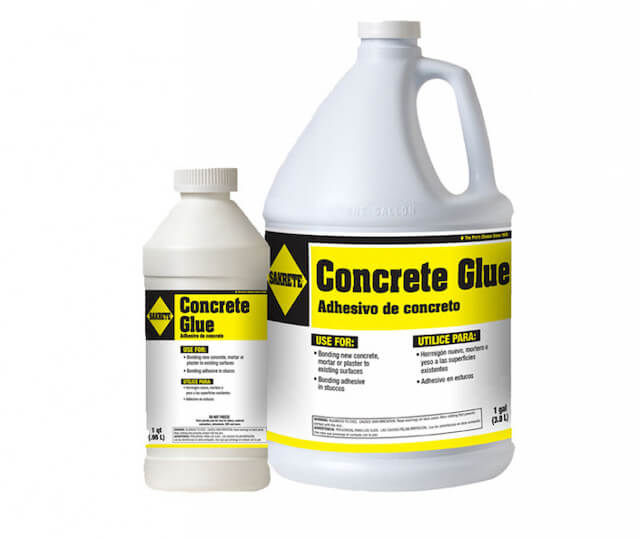
Mortar set
Similar to the Glue Set, this approach will give a more robust, resilient finish.
Because of the strong layer it provides, this method is the best option if the base is not sturdy, may be slightly uneven, or the falls are in the incorrect direction.
The mortar set method goes like this:
- You must first plan the pattern and clean the surface carefully.
- Create a mortar mixture. Remember that different cement or mortars perform best with specific types of pavers. After choosing the compatible mortar, follow the guidelines recommended by the manufacturer.
- Apply the mixture to form a mortar bed to the desired level.
- Install the paver. Try your best to do it perfectly the first time. If one tiny part needs adjustment, you must modify the whole section.
- Always check the top of the paver. It must be straight and level.
- Fill the gaps between your paver materials with sand or grout.
- Wait for the mortar to harden completely.
- Clean the newly-laid paver.
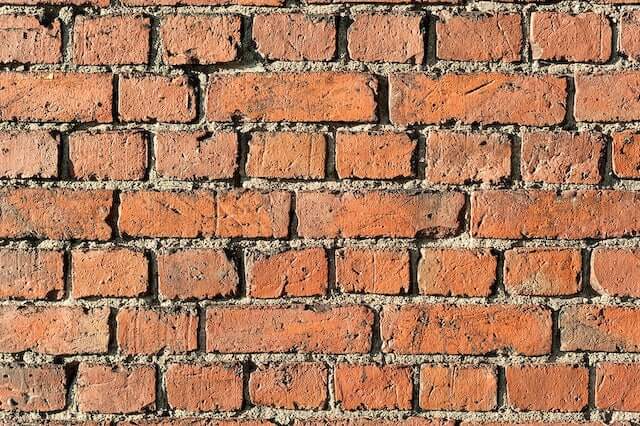
FAQs
1. Is it a good idea to put pavers over concrete?
Yes, you can place pavers directly over concrete. It is a popular and fantastic technique to update your concrete slabs.
The project can go with or without mortar. But we recommend using it because mortar can reduce drainage risks.
Contact a paver expert first to decide which paver installation method is ideal for your house and get a pricing estimate.
2. Which is cheaper: pavers or concrete?
Although pavers as a whole are not expensive, placing them requires more time and effort than pouring concrete.
Pavers often cost between $8 and $25 per square foot, whereas installing concrete runs from $3 to $6 per square foot.
Concrete could be the most excellent option to finish your home renovation project if you are on a tight budget. Nevertheless, remember that you might ultimately need to invest in upkeep and repairs.
3. Can I put pavers over cracked concrete?
The concrete should be in good condition before applying another layer. If it’s in bad condition, consider demolishing it to build a strong one.
Conclusion
You can pave over an existing patio. Check the condition of the foundation carefully and water drainage carefully.
Then, choose one of the three recommended methods for your project.
Hopefully, you will find this article helpful. Please share with us if you have any experience when paving your patio.
Thank you for reading!

